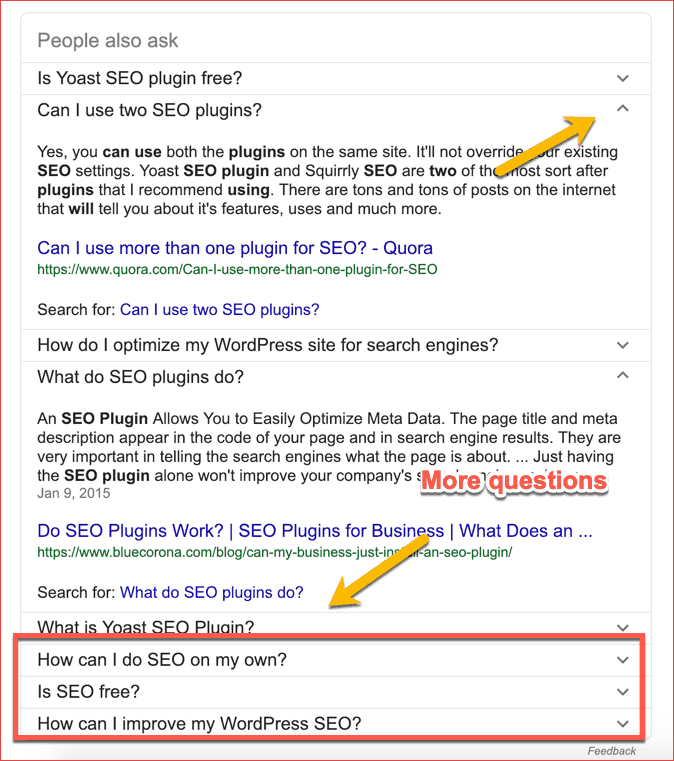
The 21st century requires that you master SEO best practices. These techniques will boost your website's performance, create substantial traffic boosts over time, attract new leads, increase conversion rates, and grow brand awareness. If you use these strategies, your website can stay ahead of its competition. How can you achieve this? Learn more about these techniques. It will be a great decision. Don't forget to add them today to your site.
Creating high-quality content
In order to rank your website highly, quality content has become increasingly important. The importance of high-quality content in 2020 is likely to grow. Google will use information from other websites to provide better results for its users. Search engines will be able to easily understand the content of your blog posts and pages if you structure it correctly. Your content must be discoverable to users in other channels. These are some tips to increase your SEO content.
Internal links
While you may have read about the importance of a sitemap and keyword-rich content in the SEO world, many people don't realize how important internal links are to the ranking of your website. Sitemaps can be described as a list that lists all pages on your site along with their relationships. But they don’t always indicate that your content has been indexed by Google. If used strategically, internal links can increase your website's ranking on search engines.

How to create informational snippets
Google's search results will display featured snippets. These snippets are typically pulled from page one but can also be found in SERPs that are lower in ranking. Featured search snippets are basically paragraphs, lists or lists that answer a user’s query without them needing to click the link. In general, ranking for a featured snippet is more effective than a high-ranking position.
Designing a mobile-friendly website
Your website should be mobile-friendly in order to increase your customer base. This can be done in several different ways. One of the most effective ways is to use local keywords. For example, a Harrisburg florist can use local keywords to increase its chances of being listed in local searches. Another tip: A hamburger menu, which is displayed at the top of your page and contains three lines and displays an option to drop down, can be used on your site. This helps keep the navigation clean, simple, and easy-to-use for your audience. The use of title tags and meta descriptions is another important SEO element for mobile websites. Both are essential components of mobile SEO because they have an impact on whether or not people click listings in search results.
Creating a meta description
A compelling meta description is crucial when optimizing your website. But there are best practices to be followed. Duplicate meta descriptions may not be good for your SEO and could hurt your page's ranking. Make your meta descriptions clear, concise, easy-to-understand, and meaningful. Your meta description is your chance to impress and persuade your readers to visit your website.
Create a page title
Page titles are not hard to write. It is all about grabbing the attention of potential customers. Google uses many signals to determine search result rankings. Keywords in the page title have a higher weight. Keywords in the title element are among the strongest on page ranking signals. In addition, browsers prefill bookmark messaging fields with the title. Aside from helping users identify pages, they also provide information by identifying the key keyword phrases.

Create an H1 heading
The H1 heading is the most important part of a page. The H1 heading is basically a description about what's on your page. It's like your title tag. It should give a preview of what lies ahead. Make sure you use descriptive headlines and keywords-rich content to optimize this section. The H1 tag is a powerful HTML element.
FAQ
What is an SEO strategy?
Content is an essential component of any website. If you don't have relevant and useful information on your site, you won't rank high enough for searches.
SEO campaigns are designed to optimize your site by obtaining backlinks from other websites. It also includes social marketing optimization. This refers to using Twitter, Facebook or LinkedIn to drive traffic to your site and increase brand recognition.
These will help bring more visitors to your website and improve your rankings. SEO campaigns focus on building quality backlinks to your site in order for Google to recognize your website's value.
Where do I get my keywords?
Consider what type of products or services your company offers and who your ideal customer might be before you start looking for standard terms. Once you have a list of phrases, you can use Google Keyword Planner to find out what phrases people are searching or directly go to search engines such as Bing, Yahoo!, and DuckDuckGo.
How can I improve my rankings using link building?
Link building is the process of creating high-quality backlinks to your website. It is essential that you ensure the websites linking to you are relevant to your business. The more authoritative and unique a link appears, then the better.
Why should I use Social Media Marketing?
Social media marketing can be a great way for new customers to connect with existing ones. You can build a community by sharing interesting articles and engaging in comments and likes with others. It makes it easier to find potential customers online.
How long does it take to see results from PPC Advertising?
Paid search results are more time-consuming than organic search results. This is because there is no natural flow. People expect to see the most relevant results when they search for something. Paid searches must be more persuasive to convince people they are worth the money.
Statistics
- 93%of online experiences today begin on search engines. (marketinginsidergroup.com)
- Sean isn't alone… Blogger James Pearson recently axed hundreds of blog posts from his site… and his organic traffic increased by 30%: (backlinko.com)
- If two people in 10 clicks go to your site as a result, that is a 20% CTR. (semrush.com)
- These guides are designed and coded 100% from scratch using WordPress. (backlinko.com)
- A 62.60% organic traffic boost to that page: (backlinko.com)
External Links
How To
How do I start my first blog.
It's simple! WordPress is a great tool to create a blog. WordPress allows users to easily modify the look of their blogs, including adding themes, changing colors and customizing the layout. They can also create plugins that will automatically alter certain aspects of the website according to visitor activity.
You can download many templates free of charge from WordPress.org. Premium templates cost money. Premium templates have additional features, such as more pages, extra plugins and enhanced security.
Once you've downloaded your template, you'll need to sign up for a free account with a hosting provider to upload your files and run your blog. Although many hosts offer free accounts with limited space, there are restrictions on the number of domains that you can host, how many emails you may send, and how many websites you can upload.
If you wish to use more than one domain, you will need to purchase additional email addresses. Some hosts charge a monthly fee for this service.
A blog hosted online is a great way to start blogging if it's your first time. Many hosts offer unlimited storage space so that your files will not be deleted even if they are accidentally deleted.
Many hosts permit multiple domain hosting. You can host several sites under one package. You don't need multiple email addresses and can manage all your sites through the one interface.
Some hosts offer social media sharing buttons that allow visitors to quickly share their posts on the web.
Hosting providers usually offer tools to manage your blog. You can view the performance stats of your website, see how many people visited each post, and compare your traffic with other blogs.
These tools can make managing your blog easier and faster, so they're worth checking out before you choose a hosting plan.
To sum up:
-
Choose a topic pertinent to your business.
-
Create engaging content;
-
Optimize your site using SEO techniques;
-
Promote your site using social media channels;
-
Regularly review your statistics in order to make changes if needed.
-
Don't forget to update the blog often.
In summary, you need to create and promote good content and then track its success.